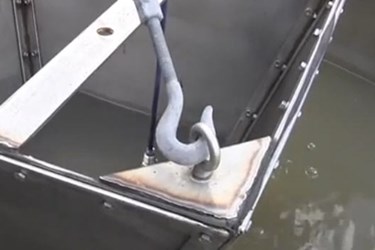BOD Interceptors: Transforming Wastewater Treatment Plants Into Renewable Energy Resources

By Alex Wright, ClearCove Systems Inc.
The Irony of Conventional Treatment
In communities across the United States, wastewater treatment plants are consuming vast amounts of energy to remove and dispose of energy rich organics. As any government comptroller can attest, the cost of the energy required to run a conventional activated-sludge treatment plant takes up a large portion – up to 40% – of a municipality’s budget. Ironically, the very substance being treated could produce more than enough energy to run the treatment plant itself.
The energy content of wastewater comes from the organics, commonly referred to as Biological Oxygen Demand (BOD). Today’s conventional primary clarification process removes approximately 30% of the BOD in the primary treatment stage. The remaining 70% moves downstream for biological treatment in what is commonly referred to as the secondary treatment stage. An activated sludge plant consumes up to 80% of its total energy converting organic matter into biomass that possesses little energy production value. For facilities with anaerobic digestion, this represents an enormous opportunity cost because 70 percent of its fuel source is being wasted.
In short, most of today’s activated sludge wastewater treatment plants are consuming vast amounts of energy when they could be producing it.
The BOD Interceptor Solution
BOD Interceptors reverse this by capturing the majority of the BOD in the primary treatment stage. The energy benefit is twofold: BOD interceptors reduce the energy required in aeration and preserve energy rich organics for conversion to biogas.
As less BOD flows downstream to undergo the aeration required for biological treatment, less energy is consumed in the treatment process. Aeration blowers can be turned off and, in some cases, whole aeration basins can be taken down.
The organics that have been captured by the BOD interceptor can be fed to an anaerobic digester in the form of primary sludge that generates up to 3 times more biogas in the digester than the relatively inert sludge that is produced after biological treatment. Using sludge with 3x the energy value makes anaerobic digesters become more economically feasible at facilities smaller than 5 million gallons per day. Wastewater sludge becomes a more competitive and attractive fuel source for anaerobic digesters.
Wastewater as a Renewable Energy Resource
Wastewater sludge represents a compelling renewable energy source when compared to other more popular sources. Solar and wind can be fickle and highly dependent on placement and weather. Produced by humans, wastewater is never in short supply, increases with population and is produced 24/7 365 days out of the year.
To capitalize on the energy potential of wastewater a technology to effectively capture the organics before secondary treatment is necessary. BOD interceptors, such as mechanically enhanced primary treatment, that rely on gravity and screening require little energy to operate provide the opportunity for municipalities and industrial operations to monetize the wastewater they produce. They can create a revenue stream for further economic development and turn what traditionally has been viewed as a liability to an asset.
